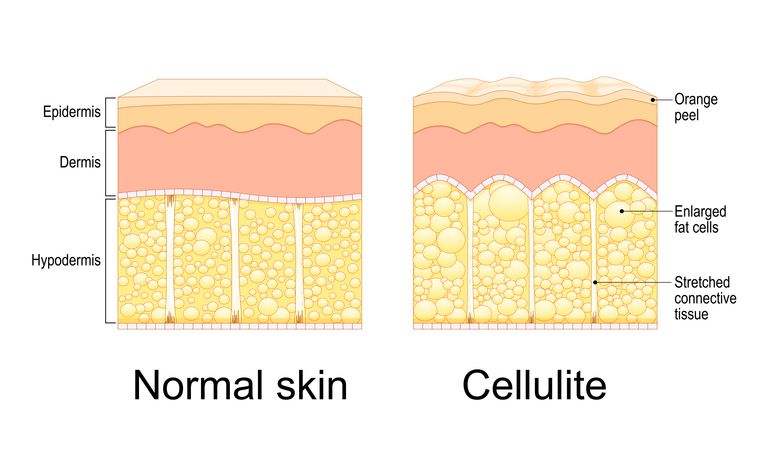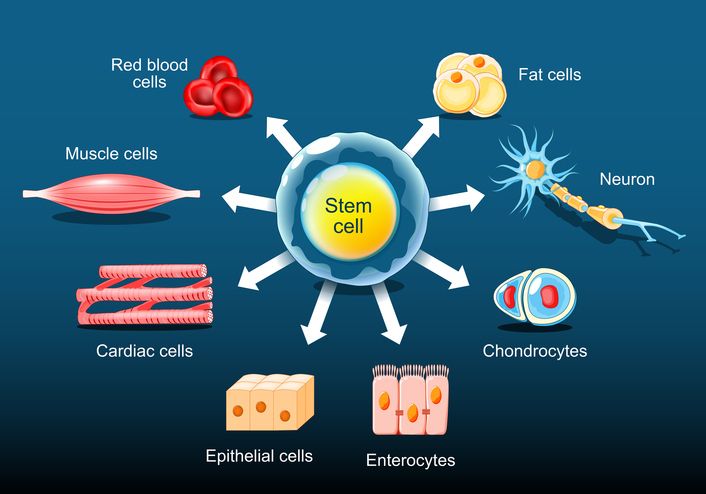
Author: Natalie Ng|Updated: 22 May 2025
Purple discoloration around the eyes is a common concern for many people. It often appears as dark circles or shadows under the eyes, making the face look tired or unhealthy. The skin in the eye area is thin and delicate, which makes it more prone to showing signs of poor circulation, irritation, or minor injuries. There are many reasons why the under-eye area may appear purple or blue. Factors like thin skin, visible blood vessels, and dilated blood vessels can all contribute. Sometimes, the color is linked to lifestyle habits such as not getting enough sleep, irregular sleep schedules, or spending too much time in the sun without proper protection. Other factors, like sinus infections, head injuries, or even a skull fracture in rare cases, can also cause dark discoloration. Understanding the different causes behind purple around the eyes is important. It helps you figure out whether it’s a harmless skin concern or something that may need medical attention. This article breaks down the common reasons you may see purple or dark undereye circles and offers a clear explanation of each cause. Keep reading to learn more about what could be affecting the appearance of your skin and how to approach it.

Cause Of Purple Discoloration 1: Thin Skin Makes Blood Vessels More Visible
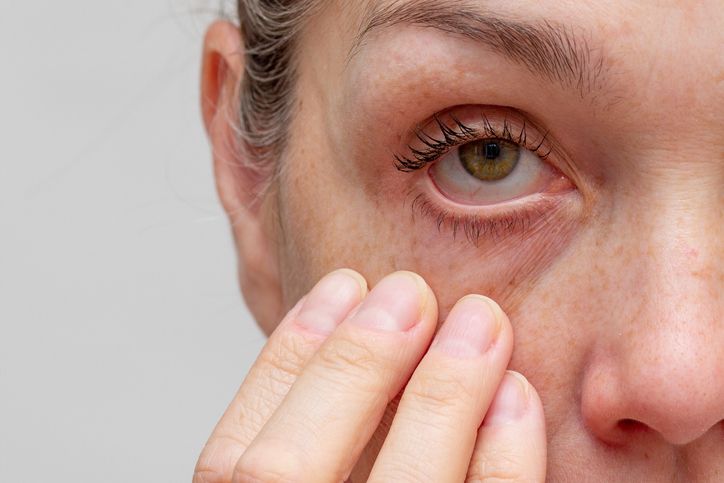
The under-eye area has naturally thin skin
The skin beneath the eyes is among the thinnest on the body, measuring approximately 0.5 millimeters in thickness. This thinness makes it more transparent, allowing the underlying blood vessels to be more noticeable. When blood accumulates in these vessels, it can impart a bluish or purplish hue to the under-eye area, especially in individuals with fair skin tones.
Skin tone and genetics influence appearance
Individuals with lighter skin tones often have more visible under-eye discoloration due to the contrast between their skin and the underlying blood vessels. Genetics also play a role; some people inherit thinner skin or a predisposition to visible veins in the under-eye area, making them more susceptible to dark circles.
Aging reduces skin thickness and elasticity
As we age, the skin loses collagen and elastin, proteins responsible for maintaining skin's firmness and elasticity. This loss leads to even thinner skin under the eyes, making blood vessels more prominent. Additionally, the natural fat pads that support the eyes may diminish over time, causing the area to appear sunken and accentuating the appearance of dark circles.

Cause Of Purple Discoloration 2: Dilated Blood Vessels Under the Eyes

Blood vessels expand and create visible discoloration
Dilated blood vessels can make the under-eye area look purple or bluish. When blood vessels expand, they hold more blood closer to the skin’s surface. Because the skin around the eyes is so thin, this extra blood flow shows through more easily, giving the area a darker appearance.
Common triggers for dilated blood vessels
Many things can cause the blood vessels under the eyes to expand. Lack of sleep slows circulation and may cause blood to pool under the eyes. Sinus infections, seasonal allergies, or frequent eye rubbing can also trigger inflammation, which leads to dilated vessels. Even changes in temperature or exposure to the sun can make the blood vessels expand.
Cooling the area may help
Applying cold spoons or cold cucumber slices to the under-eye area may help shrink dilated vessels. Cooling the skin encourages blood vessels to contract, reducing their size and the amount of blood pooling in the area. This can help the under-eye area look less purple and swollen.
Read More
Book Now to Experience
Miracle Eye Rescue Treatment
1 Minute Self-Registration
Date should not be before minimal date

Cause Of Purple Discoloration 3: Allergies and Sinus Congestion
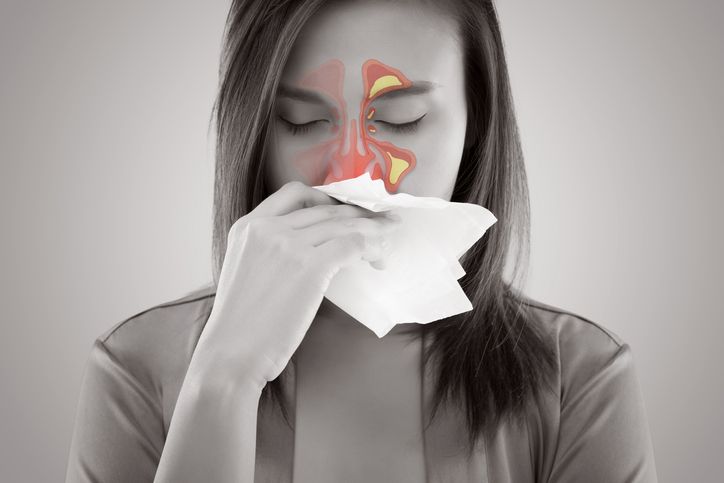
Allergic reactions can darken the under-eye area
Allergies can cause the blood vessels under the eyes to dilate and become more visible. This dilation leads to a darker appearance of the under-eye skin, often referred to as "allergic shiners." The increased blood flow and inflammation from allergic reactions contribute to this discoloration.
Sinus congestion affects blood flow
When the sinuses are congested, blood flow around the eyes can become restricted. This restriction can cause blood to pool under the eyes, leading to a purplish tint. Sinus infections or chronic sinus issues can exacerbate this effect, making the discoloration more pronounced.
Managing allergies and sinus issues can help
Addressing the underlying causes of allergies and sinus congestion can reduce under-eye discoloration. Using antihistamines, nasal decongestants, or saline sprays can alleviate symptoms. Additionally, applying cold compresses to the under-eye area may help constrict dilated blood vessels, reducing the appearance of dark circles.

Cause Of Purple Discoloration 4: Sun Exposure and Skin Pigmentation
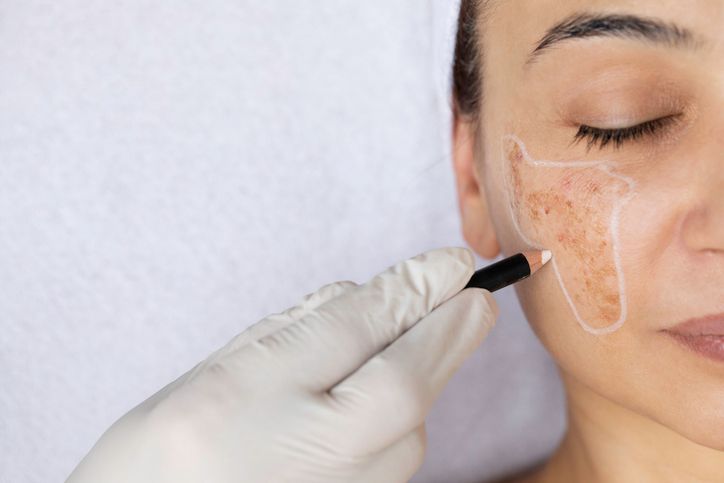
Sun exposure can darken the under-eye area
Prolonged sun exposure can lead to increased melanin production in the skin, especially in the delicate under-eye area. This can result in hyperpigmentation, making the skin appear darker or even purplish, particularly in individuals with medium to dark skin tones. The sun's ultraviolet (UV) rays can exacerbate existing pigmentation issues, leading to more pronounced discoloration under the eyes.
Skin pigmentation and its impact
Individuals with higher melanin levels in their skin are more prone to developing dark circles under the eyes due to hyperpigmentation. This condition can cause the under-eye area to take on a brown or purplish hue, depending on the depth and concentration of the pigment. Factors such as genetics, hormonal changes, and certain medications can also contribute to increased pigmentation in this area.
Protective measures to prevent discoloration
To minimize the risk of sun-induced pigmentation under the eyes:
• Use sunscreen daily: Apply a broad-spectrum sunscreen with at least SPF 30 to the under-eye area, taking care to avoid direct contact with the eyes.
• Wear protective eyewear: Sunglasses that block UVA and UVB rays can shield the eyes and surrounding skin from harmful sun exposure.
• Incorporate antioxidants into skincare: Products containing vitamin C or niacinamide can help reduce pigmentation and protect the skin from UV damage.
Book Now to Experience
Miracle Eye Rescue Treatment
1 Minute Self-Registration
Date should not be before minimal date

Cause Of Purple Discoloration 5: Lack of Sleep and Fatigue
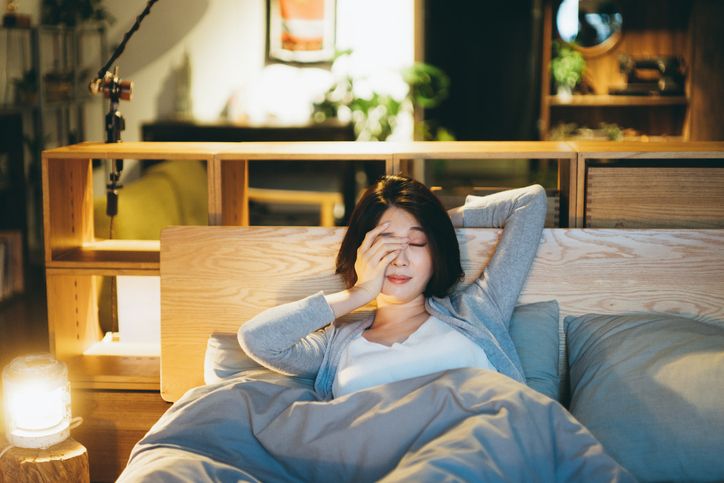
Sleep deprivation affects skin appearance
Not getting enough sleep can cause the skin under the eyes to appear darker. When the body is tired, blood vessels under the thin under-eye skin can dilate, making them more visible and giving the area a purple or bluish tint. Additionally, lack of sleep can lead to fluid retention, which may cause puffiness and further accentuate dark circles.
Fatigue leads to paler skin
Fatigue can cause the skin to become paler, which makes the underlying blood vessels more noticeable. This contrast can enhance the appearance of dark circles, giving the under-eye area a more pronounced purple hue.
Improving sleep can reduce discoloration
Ensuring adequate rest by maintaining a regular sleep schedule and aiming for at least seven hours of sleep each night can help reduce under-eye discoloration. Elevating the head during sleep can also prevent fluid from pooling under the eyes, minimizing puffiness and the appearance of dark circles.

Cause Of Purple Discoloration 6: Lifestyle Factors That Weaken Skin

Habits that impact skin health
Certain lifestyle habits can affect skin around the eyes, leading to dark, purple discoloration. Smoking, drinking alcohol, and following an irregular sleep schedule can weaken the skin barrier and thin the skin under the eyes. When skin becomes thinner, blood vessels underneath show through more easily, making the area appear darker.
Impact of dehydration and poor diet
Lack of hydration makes skin lose elasticity and firmness, while a poor diet may lead to vitamin deficiencies that affect skin tone and texture. Together, these factors create a tired, dull appearance around the eyes and contribute to visible under-eye circles.
Reducing lifestyle-related discoloration
Making small changes can help. Staying hydrated, eating a nutrient-rich diet with vitamins like C and K, and following a regular sleep schedule all support healthy skin. Quitting smoking and limiting alcohol also prevent the skin around the eyes from becoming thinner and more fragile over time.
Book Now to Experience
Miracle Eye Rescue Treatment
1 Minute Self-Registration
Date should not be before minimal date

Cause Of Purple Discoloration 7: Natural Aging and Skin Changes

Skin changes with age
As the body ages, the skin naturally becomes thinner and less elastic. The breakdown of collagen and elastin, combined with reduced fat in the under-eye area, makes the skin more fragile. This thinning makes the blood vessels underneath more visible, leading to a purplish tint.
Less collagen leading lo less support
Collagen supports skin firmness. As collagen levels decrease, the skin around the eyes loses structure, causing the tissue to sag slightly and darken. This change, along with a slower rate of skin cell renewal, can create a hollowed, tired appearance.
Supporting the skin as it ages
Using products that promote collagen production, like retinol or peptides, can help maintain skin elasticity. Gentle skincare routines, sun protection, and regular hydration all play a role in keeping the under-eye area healthy and preventing excessive darkening.

The Influence of Skin Tone on Purple Discoloration
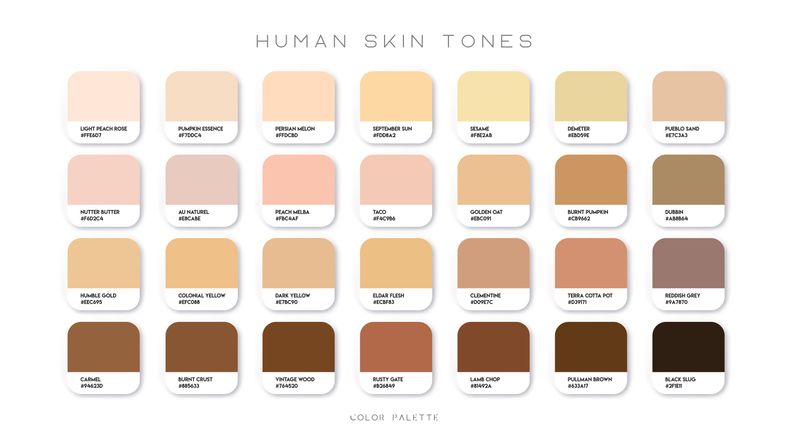
How Skin Tone Affects Under-Eye Discoloration
Skin tone significantly influences the appearance of under-eye discoloration. In individuals with fair skin, the under-eye area often appears bluish or purplish. This is due to the thinness of the skin and lower melanin levels, which make underlying blood vessels more visible. The contrast between the pale skin and the darker blood vessels accentuates this discoloration.
Conversely, those with medium to dark skin tones may notice brown or grayish under-eye circles. This is primarily attributed to higher melanin content, leading to hyperpigmentation in the periorbital area. Factors such as sun exposure, hormonal changes, and genetics can exacerbate this pigmentation.
Contributing Factors to Discoloration
Several factors contribute to under-eye discoloration across all skin tones:
• Thin Skin: The skin under the eyes is naturally thin, making blood vessels more apparent.
• Dilated Blood Vessels: Conditions like allergies or lack of sleep can cause blood vessels to dilate, intensifying discoloration.
• Hyperpigmentation: Increased melanin production, often due to sun exposure or hormonal changes, leads to darker under-eye areas.
• Aging: As skin ages, it loses collagen and becomes thinner, making discoloration more noticeable.
Book Now to Experience
Miracle Eye Rescue Treatment
1 Minute Self-Registration
Date should not be before minimal date

Treatment Options for Purple Under-Eye Circles
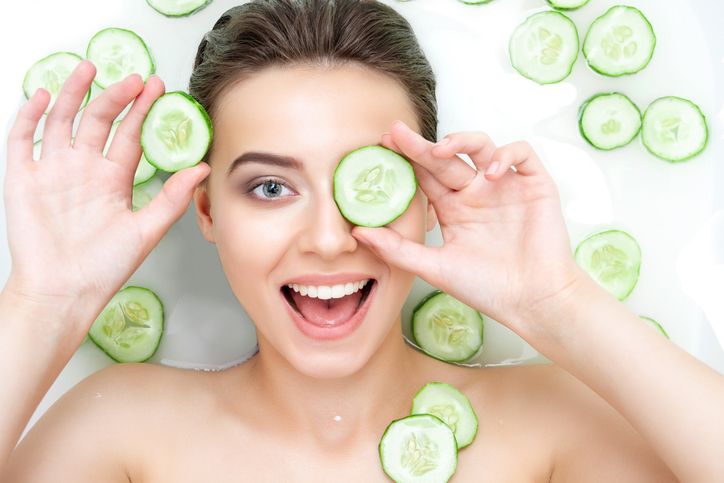
Cooling Techniques to Shrink Dilated Blood Vessels
Applying something cold to the under-eye area can help reduce the appearance of purple circles. Cold temperatures cause blood vessels to constrict, which can minimize the pooling of blood that leads to discoloration. Simple methods include:
• Cold Spoons: Place metal spoons in the refrigerator for a few minutes, then gently press them against the under-eye area for a few minutes.
• Chilled Cucumber Slices: Cucumbers have a high water content and soothing properties. Place chilled slices over closed eyes for about 10 minutes.
• Cold Tea Bags: After steeping, cool the tea bags in the refrigerator and place them on the eyes. The caffeine in tea can also help constrict blood vessels.
These methods can provide temporary relief and are especially useful in the morning or after a lack of sleep.
Skincare Products to Strengthen Thin Skin
The skin under the eyes is delicate and can become thinner over time, making blood vessels more visible. Using targeted skincare products can help strengthen this area:
• Retinol: Promotes collagen production, which can thicken the skin and reduce the visibility of blood vessels.
• Vitamin C: An antioxidant that brightens the skin and supports collagen health.
• Peptides: Short chains of amino acids that can improve skin elasticity and firmness.
• Hyaluronic Acid: Helps retain moisture, keeping the skin plump and reducing the appearance of dark circles.
Consistent use of these ingredients, typically found in eye creams or serums, can lead to noticeable improvements over time.
Sun Protection to Prevent Worsening Discoloration
Sun exposure can exacerbate under-eye discoloration by increasing melanin production and breaking down collagen. Protecting this sensitive area is crucial:
• Sunscreen: Use a broad-spectrum sunscreen with at least SPF 30 daily, even on cloudy days.
• Sunglasses: Wear sunglasses that block UVA and UVB rays to shield the eyes and surrounding skin.
• Hats: A wide-brimmed hat can provide additional protection from direct sunlight.
Incorporating these habits can prevent further darkening and maintain the health of the under-eye skin.
Lifestyle Adjustments to Support Healthy Skin
Certain lifestyle factors can contribute to the development of under-eye circles. Making the following changes can help:
• Adequate Sleep: Aim for at least seven hours of quality sleep each night to allow the body to repair and rejuvenate.
• Hydration: Drink plenty of water throughout the day to keep the skin hydrated and supple.
• Balanced Diet: Consume a diet rich in fruits, vegetables, lean proteins, and healthy fats to provide essential nutrients for skin health.
• Limit Alcohol and Tobacco: Both can dehydrate the skin and accelerate aging, leading to more pronounced dark circles.
By adopting these habits, you can improve overall skin appearance and reduce under-eye discoloration.
Professional Treatments for Stubborn Dark Circles
If home remedies and lifestyle changes aren't providing the desired results, professional treatments may be considered:
• Chemical Peels: Light chemical peels can reduce pigmentation under the eyes by removing the top layers of skin.
• Laser Therapy: Targets pigmentation and stimulates collagen production, improving skin tone and texture.
• Dermal Fillers: Injectable fillers can add volume to under-eye hollows, reducing the shadowing effect that contributes to dark circles.
• Microneedling: Involves tiny needles creating micro-injuries in the skin, promoting collagen production and improving skin thickness.

Brighten and Strengthen the Eye Area with the Miracle Eye Rescue Treatment
Purple around the eyes, dark circles, and tired skin often make the under-eye area look older and dull. These concerns come from a combination of thin skin, visible blood vessels, and fluid retention. Even with a healthy sleep schedule and good skincare, stubborn purple discoloration can remain. The Miracle Eye Rescue Treatment offers a safe, non-invasive solution to target these issues directly.
How the treatment works
The Miracle Eye Rescue Treatment uses triple-wavelength radio frequency (RF) energy, combined with red and blue light therapy, to improve skin tone and reduce purple under-eye circles.
• Triple-wavelength RF energy penetrates through all layers of the skin, encouraging blood flow in the small capillaries around the eyes. Improved circulation helps reduce the buildup of blood that can create a purple hue under thin skin.
• Red and blue light therapy works alongside the RF energy. The red light stimulates collagen production, helping to thicken the skin and reduce the visibility of dilated or broken blood vessels. The blue light helps dissolve excess fat under the eyes, smoothing puffiness and helping the area appear brighter.
• The treatment also helps drain fluid and improve lymphatic flow, reducing puffiness and swelling that often make dark circles look worse.
Advantages of the Miracle Eye Rescue Treatment
• Improves the appearance of purple around the eyes by targeting the underlying blood flow and skin structure
• Helps reduce under eye bags, dark circles, fine lines, and tired skin
• Strengthens the skin to make blood vessels less visible, creating a smoother, more even skin tone
• Safe, non-invasive, and suitable for most skin types—no injections, no incisions, no harsh chemicals
• Comfortable experience with no downtime—you can return to daily activities after the treatment
By addressing the root causes of purple under-eye circles—thin skin, poor circulation, and excess fat—the Miracle Eye Rescue Treatment offers long-term improvement in the look and feel of the eye area.
Book your appointment today to discover how the Miracle Eye Rescue Treatment can brighten your eyes and restore a fresh, youthful appearance.
New Beauty's R6 Miracle Eye Rescue TreatmentBook Now to Experience
Miracle Eye Rescue Treatment
1 Minute Self-Registration
Date should not be before minimal date
FAQ
1. Can thin skin make dark circles look worse even without other issues?
Yes, thin skin under the eyes makes it easier to see the underlying blood vessels. Even without other issues like excess fat or fluid retention, thin skin alone can make the under-eye area appear darker or purple. Thicker skin with more collagen helps reduce this visibility, which is why treatments that stimulate collagen production can help improve under eye circles.
2. Does diet affect the appearance of purple around eyes?
A poor diet can indirectly contribute to dark circles and purple discoloration. Lack of nutrients like vitamin C, vitamin K, and iron may weaken blood vessels, increase skin fragility, and affect skin tone. Eating a balanced diet with plenty of fruits, vegetables, and lean proteins supports skin health and helps minimize the visibility of dark circles.
3. Can dehydration cause purple under eye circles?
Yes, dehydration can make dark circles and purple discoloration more noticeable. When the body lacks water, the skin can appear dull, sunken, and less elastic. This makes underlying blood vessels stand out more. Drinking enough water helps keep skin plump and may improve the appearance of under eye circles over time.
4. Do dilated blood vessels under the eyes always mean a medical problem?
Not always. Dilated blood vessels are common in the under-eye area because the skin is thin and the capillaries are close to the surface. They can become more noticeable due to factors like fatigue, allergies, or sun exposure. However, if the discoloration appears suddenly, worsens rapidly, or comes with other symptoms like pain or swelling, it’s a good idea to consult a healthcare professional.
5. Are there natural ways to reduce the look of purple around the eyes?
Natural methods can help improve the appearance of purple under eye circles. Applying cold spoons or cucumber slices can temporarily shrink blood vessels. Using skincare with vitamin C, retinol, or peptides helps strengthen skin and may reduce visible blood vessels. Maintaining a regular sleep schedule, wearing sunscreen, and eating a balanced diet also supports skin health and helps minimize dark circles over time.
Recommended Articles
COPYRIGHT© NEW BEAUTY MANAGEMENT LIMITED 2025. ALL RIGHT RESERVED.

